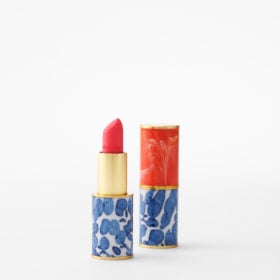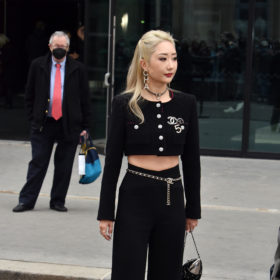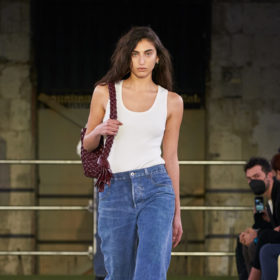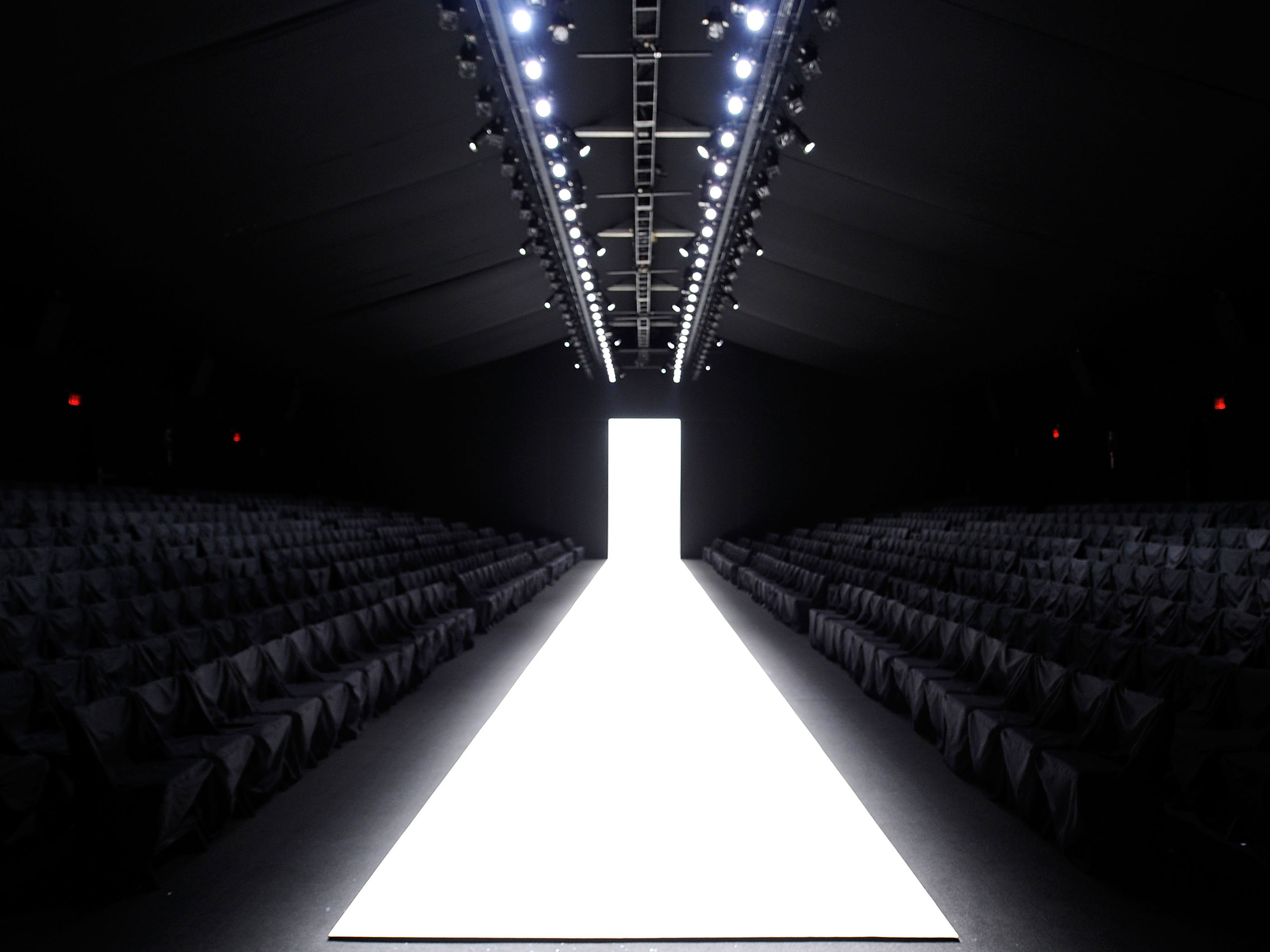
May 11, 2021 at 09:43PM
Once upon a time, there was a fairy godmother. Glamorous and well-connected, she loved clothes, and was generous in granting wishes to people who made beautiful, unique things. With a tap of her wand, she funded scholarships and prizes, liberally dusting her chosen proteges with the kind of magic that drew the attention of other important people.
And then one day, she did something that shocked everyone: She posted a picture of herself on social media, smiling with a notorious ogre who despised the sort of inclusive, joyful self-expression she’d seemed to support herself, and she captioned it: “A special way to end the night!” The carriage turned into a pumpkin in a single Instagram Story.
To see her doing this not only broke the hearts of many in the kingdom — after all, the makers of the beautiful things she loved to support were also often the kinds of people that this ogre was especially cruel to — but it put them in a tricky spot. To speak out against this fairy godmother could mean cutting themselves off from one of the few sources of support for their craft in all the land, and banishing her from the kingdom was all but unthinkable, especially when her largesse had paid for much of it, from the schools where this craft was taught to the festivals that celebrate it, and dozens of red carpets and galas in between. And did we mention that this fashion fairy godmother was married to one of the most powerful lords in the court, whose family had their fingers in all kinds of pies — sports, telecom, media — across the land? It is no wonder a dark shadow has fallen across the kingdom, not lifting even when the fairy godmother attempted to apologize, saying she didn’t mean anything by that picture with the ogre, and she regrets sharing it.
We are telling you this dark fashion fairytale for two reasons: Not only is it an apropos way to chronicle the furor surrounding Suzanne Rogers, dubbed “Canada’s fashion fairy godmother,” but it’s also the simplest way to illustrate precisely why the events of May 1 — when she shared Instagram Stories of a visit to Donald Trump’s Mar-A-Lago resort in Florida, including a picture with the man she called “The Donald” himself — have thrown Canada’s fashion industry into such an existential crisis. While a later statement says she took and posted the image “without considering the false assumptions and implications that would be made about my personal beliefs,” many interpreted Rogers’s presence at Trump’s HQ (and by his side) as an endorsement of the man and his politics, which have included banning transgender people from serving in the military, a travel ban on certain Muslim-majority countries, and a border policy that has separated thousands of migrant parents from their children, and characterized by countless dog-whistled racist, xenophobic and sexist remarks. For an industry that, at its best, embraces diversity of culture, sexuality, gender expression, it was an unpalatable — and deeply hurtful — pairing.
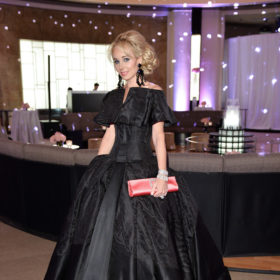
Suzanne Rogers’s influence, by the numbers
ADVERTISEMENT
ADVERTISEMENTKate Spade Autumn/Winter Sale |
If you’d prefer numbers, however, they tell an equally powerful tale of influence and inequity: Through the Suzanne and Ted Rogers Foundation, she has donated significant dollars to the industry to endow the Suzanne Rogers Fashion Institute at Ryerson University and a prize worth $25,000 at the Canadian Arts and Fashion Awards. This is in addition to her own personal wardrobe spend on Canadian couture (rumoured to be in the six figures annually), and the harder-to-quantify value bestowed when she is photographed in designer’s dress, or wears it to a society function where other wealthy people might see it, and want one for them. This was not just any socialite doing something controversial on social media. It was a socialite doing something controversial on social media who happened to also hold the purse strings that are a lifeline to designers in an industry that struggles to find meaningful financial support outside of the few prizes, scholarships and personal patronage of a select few, of which Suzanne Rogers is the most generous, and resultantly, one of the most influential.
Without a grant like the CAFA Award in her name (an organization that counts her husband Edward Rogers’s family business as a major media partner), or a place on the fellowship program she’s endowed at Ryerson (where the Rogers family, by the way, have donated $34 million over the years, including $10 million to the Ted Rogers School of Management, making them, by the institution’s own admission one of their “most generous” benefactors), a Canadian designer might find themselves in the sort of position that Andrew Coimbra, and many others like him, know as the everyday reality of trying to run a fashion label in Canada.
The cost of financing a fashion business in Canada
“My label has always been a side hustle,” says Coimbra, who launched his genderless line in 2015. “I’ve always had a full-time job to sustain myself and to inject into the label.” Unlike some in the industry, he hasn’t been able to rely on family money to fund his dream full-time, although his parents have helped him with smaller things, like hiring a model for a shoot which, in Canada, can be in the low hundreds of dollars. Other times, he’s had friends in the industry help him out for “mate’s rates,” or just for the love of it. (A common theme in this industry, by the way, where make-up artists, photographers, set designers and every other person who touches the fashion world have “volunteered” far more than they’ve been paid.) “Suffice to say it can be very challenging,” says Coimbra, who says his situation isn’t uncommon.
You might be wondering, of course, why it’s so hard for a fashion label to sustain itself financially. After all, isn’t the business model just they make clothes, customers buy them, and hey presto, you’re profitable? It’s not that simple, says Coimbra. Selling direct-to-consumer might work as an Etsy seller, but to compete in the world of high fashion, you need to get your line in front of buyers, who will then get it placed in the sorts of stores where your customer is likely to shop, or at least come across you for the first time. To do that, many designers sign with a sales agency, whose job it is to get buyers to pay attention to your label from among the thousands of others clamouring for a rack in Holt Renfrew or to be stocked on SSENSE. “When I’ve been approached by sales agencies wanting to represent my label, the rate I was quoted was anywhere from 3000 Euros to 5000 Euros, per season,” says Coimbra, noting that there are two of those per year. “That would mean a nearly $15,000 annual expense just to have my collection represented and shown to buyers. This doesn’t guarantee a buy, and it doesn’t include a commission rate that many sales agencies try to work out.” Oh, and this doesn’t include the cost to make samples of your designs or to shoot a look book. “The minimum seasonal spend on a collection averages at $15,000,” says Coimbra — and this is before you even begin production on the clothes you’ll actually be selling to customers or think about hiring any staff to support the business.
Government funding for fashion businesses in Canada — or lack thereof
In a perfect world, this is where government grants would step in to bridge that gap, providing life-changing seed money for new and emerging designers. Canada does have some programs that do this, but they are few and far between. In fact, Rogers herself acknowledged the bleakness of the funding landscape for Canadian designers, telling Refinery29 last year: “Designers have never had the opportunity for support from the highest level of our country, starting from the top with the government never giving grants, funding, or bursaries.” Quebec is the only province to offer government financial support for fashion businesses, and while the Toronto Fashion Incubator, funded by the city of Toronto, does offer showroom space for designers to exhibit their collections, and a prize that takes their collection to London Fashion Week, it’s more of a media opportunity than it is a chance get your clothes in front of buyers.
Other federal or provincial small business grants for start-up or small businesses are aimed at specific sectors — most often tech-related — while others are aimed at established businesses with a certain number of employees or annual revenue, over, say $100,000. “It’s a lot to ask of industry folk that more often than not are conducting their businesses in their off hours,” says Coimbra. “Setting the bar so high stunts the opportunity for anyone that doesn’t have access to a disposable income that would help them get to this point in the first place. It feels very exclusionary and — frankly — elitist.” That’s why he’d loved to see a tiered scale of grant funding, one that supports fashion businesses at every stage of their growth.
This is further exacerbated by the fact that fashion, unlike film, literature or visual arts, is not included in governmental culture portfolios, meaning creatives are shut out from funding like the one-time $25 million Ontario’s government injected into the provincial arts sector in 2020 to help them respond to the challenges of the pandemic — which, by the way, have been plentiful in the fashion sector. The COVID-19 pandemic has forced major chains like Addition Elle and Mendocino to shutter stores, household names like Aldo to file for bankruptcy, and countless small boutiques and labels to fold, taking jobs and dreams with them.
The role of privilege further complicates matters
That’s the thing: If someone like Andrew Coimbra, who comes from a financially stable family, has struggled to get a label off the ground, what hope do people from less privileged backgrounds have? For Lidia Tesfamicael and Luxi Mathi, we can’t talk about Canada’s lack of financial support for the fashion industry without talking about the dearth of equitable access within it. And not only that, but the role this scarcity of access plays in discouraging diversity and inclusivity in an industry that’s currently stuck in a system of a small handful of privileged (usually white) patrons supporting a small handful of talent, who, when their patron does something problematic are put in a very, very awkward position. “An entrepreneur’s or student’s finances are oftentimes the barrier between good talent and their success,” say the women, who founded a non-profit, Canada Fashion Network, that is working to be a platform where solutions for those barriers can be discussed.
“As entrepreneurs ourselves, both Lidia and I have faced the same difficulties Canadian creatives have while trying to launch a business,” says Mathi, a Tamil-Canadian who runs a model management company, while Tesfamicael, an Eritrean-Canadian, designs under the label Lidia Daniel. “The country is setting the entrepreneurs up for failure without them even knowing it,” the women say, pointing to a lack of a Canadian equivalent to the U.K.’s British Fashion Council, which is dedicated to promoting the fashion industry there at home and abroad. “There is no committee, governing body, or entity to guide the fashion community to success, teaching and setting standards in the industry across the nation,” Tesfamicael and Mathi say. They add that even something as small as a lack of government-sponsored market research can be an added burden to designers trying to pitch themselves to buyers, or plan their marketing or production strategy, and a lack of local manufacturing leads to absurd situations like Canada spending billions abroad on PPE, “when if those dollars were put into our own economy, it would have helped a lot of fashion entrepreneurs sustain their jobs, and and better support our infrastructure here in Canada.”
And when brands can barely keep their heads above water, the women point out, it feels impossible for the industry to even begin to tackle all of the unaddressed issues, like sustainability and diversity — or have the independent financial backbone to be able to speak against them when they see them.
Which is why the current state of the industry — where fashion entrepreneurs are beholden to private patrons like Suzanne Rogers, and even the institutions that teach them their trade are reliant on private donors to run their programs — cannot continue if Canada wants a vibrant, thriving fashion industry that doesn’t have to worry about keeping a few potentially problematic people happy to thrive. While there’s an argument to be made for the consumer’s role in supporting local talent, it’s a circular one: After all, how can our fashion designers be expected to compete in the global marketplace (often against fast-fashion’s siren call), when they haven’t been given the resources and space to create internationally-competitive things? It’s not a lack of talent we suffer from — just a lack of investment.
The post How the Suzanne Rogers Controversy Exposed the Canadian Fashion Industry’s Funding Problem appeared first on FASHION Magazine.
ADVERTISEMENT
ADVERTISEMENTSports Direct Free Delivery on All Orders! |
Read More Fashion News
Author Sarah Laing | Fashion Magazine
Selected by CWC
ADVERTISEMENT
ADVERTISEMENTUp to 30% off Gift Sets |




